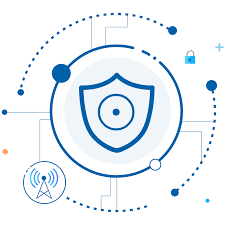Safeguarding the Future: Understanding 5G Cybersecurity
Tables of Content
- Introduction
- What is security in 5G?
- Does 5G have good security?
- How to make 5G more secure?
- What are the layers of 5G security?
- Conclusion
Introduction:
With the rapid deployment of 5G technology, the promise of ultra-fast speeds and seamless connectivity is within reach. However, as the world becomes increasingly reliant on 5G networks, concerns about cybersecurity have come to the forefront. In this blog, we'll explore the intricacies of 5G cybersecurity, examining its significance, challenges, and strategies for ensuring robust security in the era of 5G.
What is security in 5G?
Security in 5G encompasses a wide range of measures designed to protect
networks, devices, and data from cyber threats. It involves safeguarding
against unauthorized access, data breaches, and other malicious activities that
could compromise the integrity, confidentiality, and availability of 5G
infrastructure and services.
Does 5G have good security?
While 5G offers numerous benefits, including faster speeds and lower
latency, its security posture is not without challenges. The increased
complexity of 5G networks, coupled with the proliferation of connected devices
and applications, creates new attack surfaces and vulnerabilities that
adversaries can exploit. Therefore, while 5G technology holds great promise,
ensuring good security requires proactive measures and continuous vigilance.
How to make 5G more secure?
To enhance the security of 5G networks, stakeholders must adopt a
multi-faceted approach that addresses vulnerabilities at various levels. This
includes implementing robust encryption protocols, authentication mechanisms,
access controls, and intrusion detection systems. Additionally, ongoing risk
assessments, threat intelligence sharing, and collaboration between industry
stakeholders are essential for identifying and mitigating emerging threats.
What are the layers of 5G security?
Network layer: which encompasses
protocols for secure communication and routing.
Application layer : where
encryption, authentication, and access control mechanisms are implemented.
Physical layer : where measures
such as secure hardware and tamper-resistant components are employed.
Conclusion:




Comments
Post a Comment